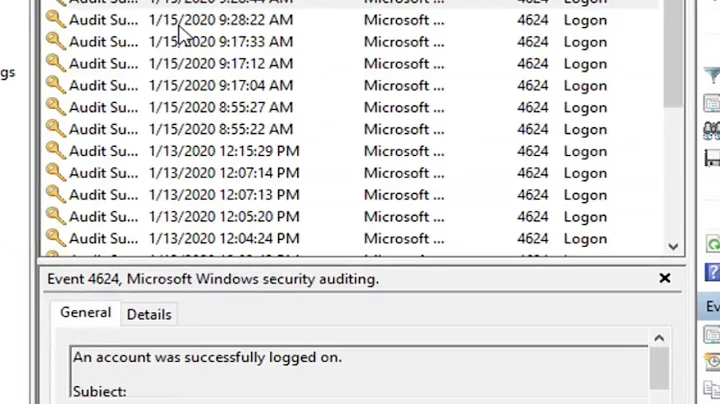Does the event log get an entry when automatic updates are turned off on Windows Server 2003
The Automated Updates client doesn't generate any specific Event Log messages when its configuration is changed. You'll have better luck locating information about how it is behaving in %SystemRoot%\WindowsUpdate.Log, where the Automated Updates client puts most of its logging information.
Related videos on Youtube
jackmott
Updated on September 18, 2022Comments
-
 jackmott almost 2 years
jackmott almost 2 yearsI'd like to take a List or Array, and given two elements in the collection, get all elements between them. But I want to do this in a circular fashion, such that given a list
[1;2;3;4;5;6]and if I ask for the elements that lie between 4 then 2, I get back[5;6;1]Being used to imperative programming I can easily do this with loops, but I imagine there may be a nicer idiomatic approach to it in F#.
Edit
Here is an approach I came up with, having found the Array.indexed function
let elementsBetween (first:int) (second:int) (elements: array<'T>) = let diff = second - first elements |> Array.indexed |> Array.filter (fun (index,element) -> if diff = 0 then false else if diff > 0 then index > first && index < second else if diff < 0 then index > first || index < second else falseThis approach will only work with arrays obviously but this seems pretty good. I have a feeling I could clean it up by replacing the if/then/else with pattern matching but am not sure how to do that cleanly.
-
user over 12 yearsYou might notice the lack thereof in Windows->Setup
-
 joeqwerty over 12 yearsRather than turning Automatic Updates off, you might try disabling the Automatic Updates service. That will ensure that no updates will be downloaded or installed. You can do this via GPO, which will make it much easier to manage if you have more than a few servers.
joeqwerty over 12 yearsRather than turning Automatic Updates off, you might try disabling the Automatic Updates service. That will ensure that no updates will be downloaded or installed. You can do this via GPO, which will make it much easier to manage if you have more than a few servers. -
Guy Coder over 8 yearsYou need to provide your attempt. While most of us can easily answer this, you need to show your effort. As such I am giving this a down vote.
-
Mark Seemann over 8 yearsWhat should happen in case of duplicates? What if one of the limit values aren't found?
-
Guy Coder over 8 yearsThanks for showing your attempt. I reversed my down vote.
-
 jackmott over 8 yearsduplicates are ok. Limit values not being found should be an error. I don't need exact code for this just some general approaches.
jackmott over 8 yearsduplicates are ok. Limit values not being found should be an error. I don't need exact code for this just some general approaches. -
Guy Coder over 8 yearsA variation of this would be to use list slicing, e.g. <someList>.[(first+1) .. (second-1)].
-
 jackmott over 8 yearsThank you everyone for the responses, they are all helpful. I may have to select an official answer partly at random.
jackmott over 8 yearsThank you everyone for the responses, they are all helpful. I may have to select an official answer partly at random.
-
-
 jackmott over 8 yearsThank you, it is good to see an approach both for Lists and Arrays.
jackmott over 8 yearsThank you, it is good to see an approach both for Lists and Arrays. -
Phillip Scott Givens over 8 years@FoggyFinder Thank you. I usually use www.tryfsharp.com, but it requires an install that I didn't have on that computer.
-
Phillip Scott Givens over 8 yearsThis looks like it will only work if
firstis both the index and the value of the first element. Perhaps I misunderstood, but I thought that[1;2;3;4;5;6]was only an example. I do not think that this will work for an arbitrary buffer such as[11;13;14;16]. This needs the list to start with 0[0;1;2;3;4;5;6] -
Guy Coder over 8 years@PhillipScottGivens I did not check the code for exact correctness because the OP stated in a comment
I don't need exact code for this just some general approaches.. Since the answer is CC feel free to edit the answer.




